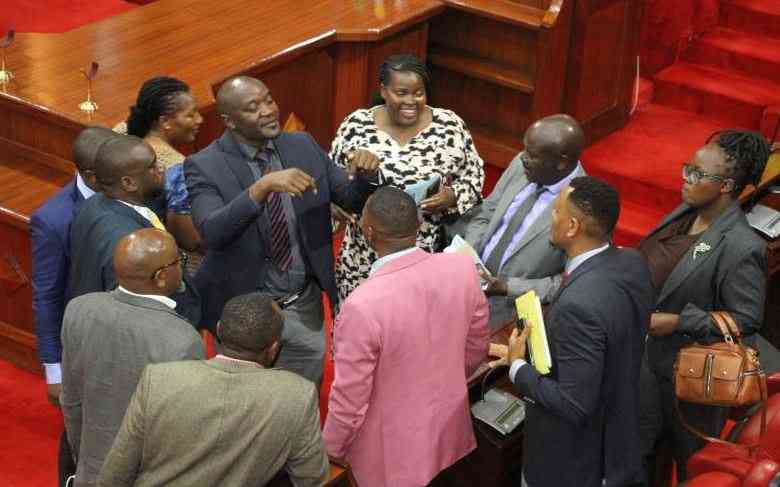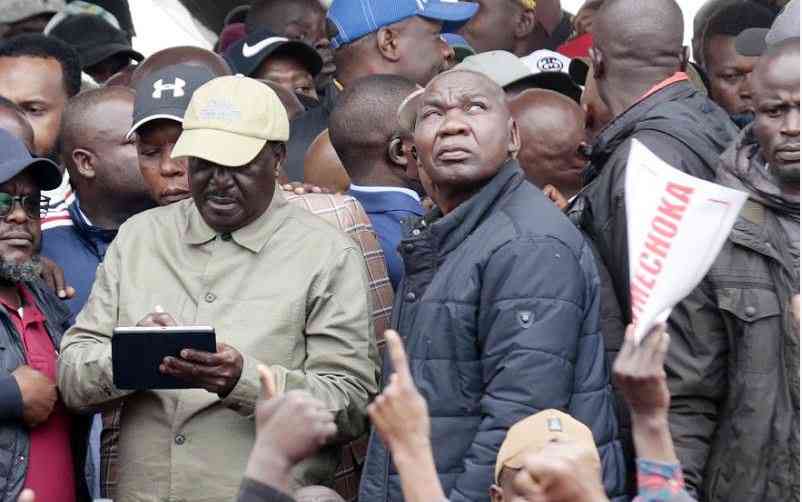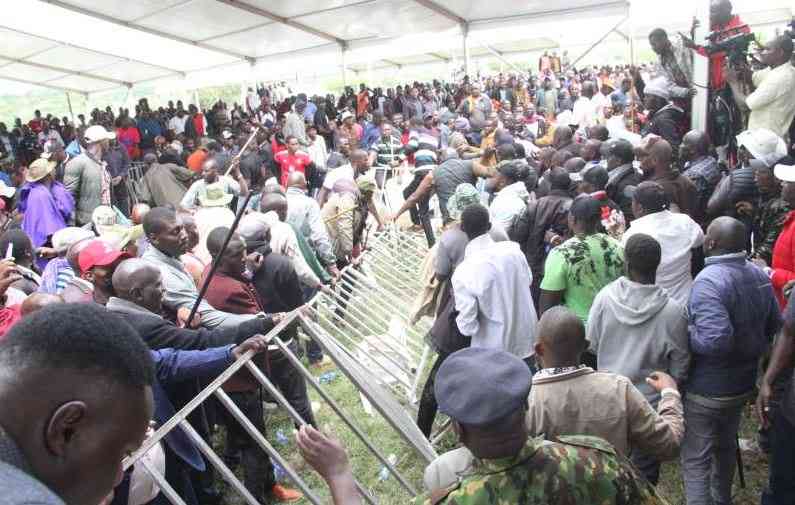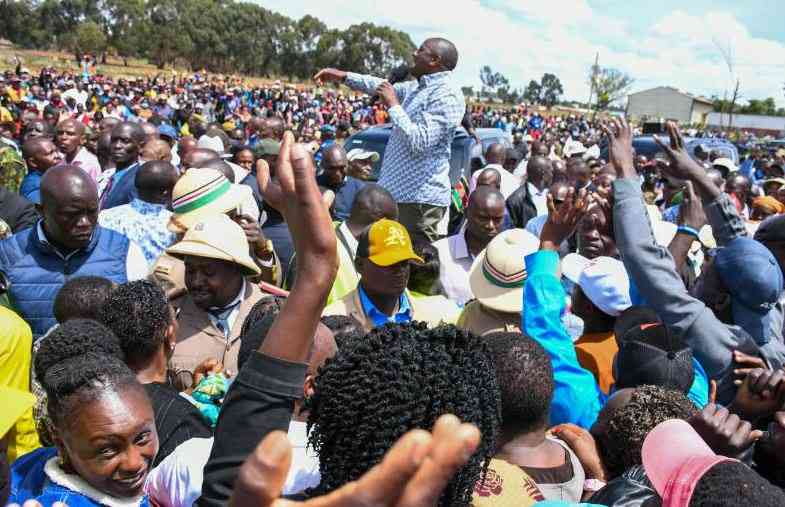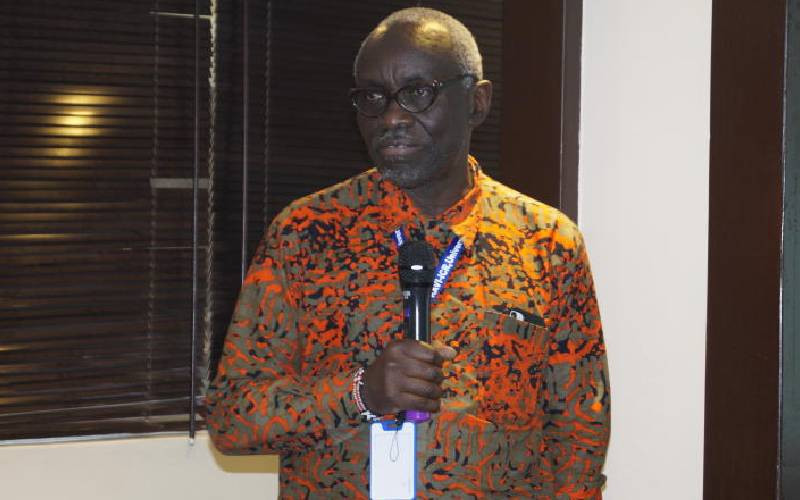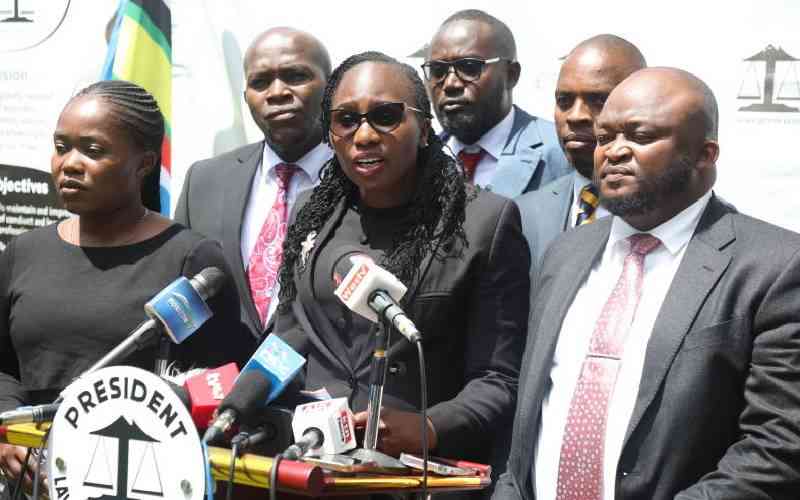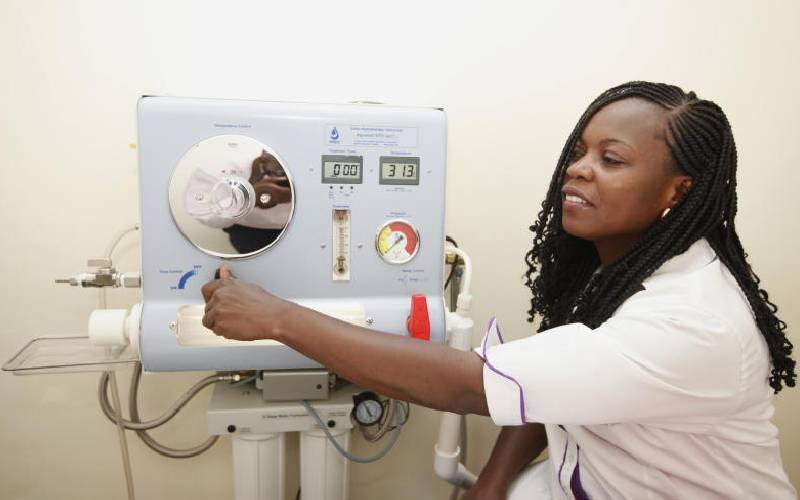
President William Ruto’s ambitious nationwide livestock vaccination campaign, launched with great fanfare in November 2024, has stalled due to major logistical failures, funding shortages and lack of stakeholder involvement.
Now, veterinary doctors warn that unless urgent adjustments are made, the initiative meant to protect millions of animals from deadly diseases could be permanently derailed.
“The government launched the campaign with inadequate stakeholder engagement, public sensitization, and a clear implementation plan. This lack of readiness has led to operational inefficiencies,” said Dr Kelvin Osore, National Chairman of the Kenya Veterinary Association (KVA), in a memo to veterinary doctors dated March 10 this year.
The ambitious programme was aimed to vaccinate 22 million cattle against Foot and Mouth Disease (FMD) and 50 million sheep and goats against Peste des Petits Ruminants (PPR). Introduced at the Maa Cultural Festival in Samburu County, the government allocated Sh1 billion to restock livestock lost to drought, purchasing 55,000 goats and sheep for affected families. It also promised to complete leather industrial parks in Kenanie and Narok to reduce leather wastage.
The then Agriculture Cabinet Secretary Andrew Karanja assured farmers that vaccines would be locally sourced from the Kenya Veterinary Vaccines Production Institute (KEVEVAPI), which produces up to 75 million doses annually. He urged full participation, calling the program a “game-changer” for the livestock sector.
Poor planning
“We need to trade the animals for meat, and in order to do so, we need to create a disease-free country. That is why we are advocating for the vaccination of our animals,” Karanja said while touring KEVEVAPI in December last year to assess preparations.
- Vaccine to tackle methane in cattle still in the works
Keep Reading
However, within weeks of its launch, the campaign began to falter, and this is what veterinary doctors in their internal document titled ‘Situational Analysis of the National Livestock Vaccination Campaign’ say the campaign has collapsed.
Veterinary experts say the program was rushed without proper planning and that severe logistical and financial shortcomings made large-scale vaccinations impossible. County veterinary officials report that vaccinators have not been paid and there is a shortage of essential protective equipment, and transport logistics have been hampered by fuel shortages.
“There was insufficient funding hindering logistics such as payment of vaccinators, procurement of Personal Protective Equipment (PPE), and fuel for the transport operations among others. The failure to address these financial gaps has stalled the campaign, highlighting inadequate preparedness, rushed implementation and ineffective stakeholder coordination,” KVA said.
Moreover, the exclusion of key stakeholders has further weakened the campaign. Many farmers, veterinarians, and county governments were not fully involved in the planning, leading to poor execution on the ground.
“You cannot implement a nationwide vaccination campaign without engaging those who are directly responsible for livestock health,” said a senior veterinary officer who requested anonymity.
They said that the controversy surrounding the campaign has deepened with political interference. Some politicians and veterinary experts have raised questions about transparency in vaccine procurement and the government’s commitment to following through on its promises. However, Ruto dismissed critics, accusing them of deliberately sabotaging a critical national project.
“Honestly, how else can you explain? If you don’t know about livestock, shut up—at least for those of us who keep cattle,” the president said. “There is an evil spirit among Kenyans; they oppose everything by spreading lies. Anybody opposing vaccination to eliminate FMD and PPR is simply mad, unreasonable and possibly stupid.”
These remarks have done little to reassure stakeholders, who insist that the government must address the program’s fundamental weaknesses rather than attack those raising concerns. With the campaign now effectively stalled, veterinary doctors are calling for a comprehensive review of the initiative. The KVA has outlined several urgent recommendations to salvage the program and ensure its long-term success.
“The lack of funds to cover basic operational expenses points to deeper issues in resource allocation and financial planning,” Osore said.
First, they emphasize the need for public sensitization to counter misinformation and increase farmer participation. Many farmers remain skeptical due to poor government communication. Experts argue that awareness efforts must be intensified.
Second, KVA urges the government to improve stakeholder engagement by involving veterinary professionals, farmers, and county administrations in both planning and execution. The rushed rollout without proper coordination has been a major factor in the program’s failure.
“The lack of funds to cover basic operational expenses points to deeper issues in resource allocation and financial planning,” KVA said.
They are also calling for better logistics and resource allocation to ensure vaccinators are paid promptly, necessary equipment is available, and transport logistics are not hindered by fuel shortages.
KVA is pushing for increased veterinary staffing to address the acute shortage of veterinarians in the public sector. Many counties lack enough professionals to administer vaccines effectively, leading to delays and inefficiencies.
Additionally, veterinary experts recommend private sector collaboration to enhance efficiency. Engaging private vaccine manufacturers and veterinary service providers would ensure a steady supply of vaccines and streamline service delivery.
 The Standard Group Plc is a multi-media organization with investments in media platforms spanning newspaper print
operations, television, radio broadcasting, digital and online services. The Standard Group is recognized as a
leading multi-media house in Kenya with a key influence in matters of national and international interest.
The Standard Group Plc is a multi-media organization with investments in media platforms spanning newspaper print
operations, television, radio broadcasting, digital and online services. The Standard Group is recognized as a
leading multi-media house in Kenya with a key influence in matters of national and international interest.

